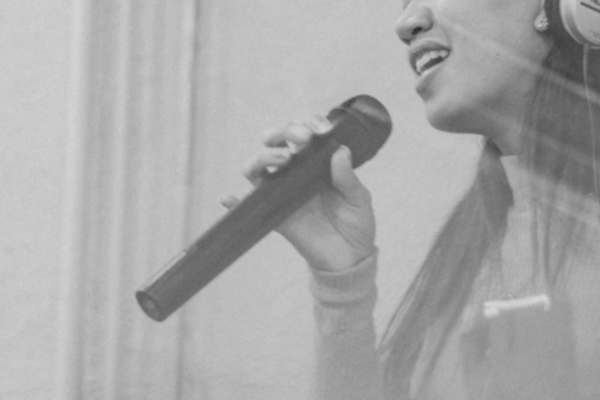My journeys to New York, London, Paris and Florida have always been met with incredible vocal coaches who are so passionate about teaching singing. Our conversations on what can help aspiring singers, help to build confidence, and popular areas of study invariably include a mention on singing high notes!
Where did our love of high notes come from?
Well, just like clothing – music goes through fashions and if we think back to the 30’3/40’s then a very jazzy head voice might have served well as the desired sound (skip forward to the 80’s and the breathier falsetto was all the rage!). Classical singers always needed a good amount of volume to cut through the orchestra and the intensities of those high frequencies and ring would be matched with the emotional context of a phrase/piece. When broadway really came into it’s own – the voices were almost crossing a classical style and projection with more pop/rock styles and so a hybrid was born… we come down the line to almost present day and the ‘big belter’s took that broadway sound and made huge hits in the charts with these high, powerful ‘money notes’. In the charts right now we have many examples of softer/lighter high notes once again as the style comes back into fashion! Even though it is an illusion; there is a ‘danger’ or ‘edge’ associated with high notes with an increase in emotion and so we are drawn to this as a part of performance because it feels exciting and ‘reward’ for the right work. It’s also such a fun part of vocal exploration to consider stretching and adapting the voice to the emotion and story we wish to convey!
So, something about when you’re approaching ‘high notes’ is what style, presentation and context am I looking to acheive? This will effect the approach in numerous ways.
Technique
The voice is not just one muscle doing some work – but our entire body- in a fine balance as we move around different sounds. A vocal coach will help a singer to understand, access and develop many different areas to bring about the desired final sound; so to really know how to sing high notes… we have to delve deeper into what our body is doing to make all sound. If you are already studying singing then keep thinking on your posture, focussed breath, stable low range, variety of volumes, textures and effects. The vocal folds lengthen for higher pitches with this process controlled by the crichothyroid (CT).
There is so much more we can prepare and consider rather than just the final sound we make! Take the below as an example – who knew you could do a ‘pre- warm up… warm up?
Example pre-warm up routine
- Light jog on the spot
- Upwards and outward stretch to open rib cage and unlock any tension
- Focussed breath work flow – working deep into the body
- Floor work – breathing with a book
- Bounce and shake with body
- Face and neck stretch and massage
- Throat smile on inhale – no squeeze
MYTHS ABOUT HIGH NOTES:
We have to push more air out to sing high notes – NOPE
Only some singers can do it – NOPE
We have to get louder to sing high notes – NOPE
It is not good for the voice to sing high notes -NOPE
5 exercises to access high notes:
- Sing an ‘oooohhhhh”’ like a yoyo – bending the note as you go higher. We want to act fun and light without force
- Lip trill and sirens* *Make sure there is not excess air escaping (like an ‘h’ sound in between each pitch)
- Start on a high note and slide down rather than always starting scales from a low note
- Give yourself true permission to make a sound on a high note without any worry of how it will sound. Giving permission to ourselves can be the single most effective tool in vocal development
- Rather than singing high notes – try sound effects to encourage the co-ordination without negative tension or ‘pull’ or ‘force’
- Practise more classical ways of approaching notes – avoiding glottal onsets. Embrace a connected and rounded ‘head tone’ to the voice with thyroid tilt and unified shaping of tone
- Practise singing low pitches softer
In pop music – the ‘money notes’ of a chorus for a male vocal might sit from E4- A4 on a piano. The female version tends to be from Bb5 – D5 (there are lower and higher examples but this is a general ball park!)

